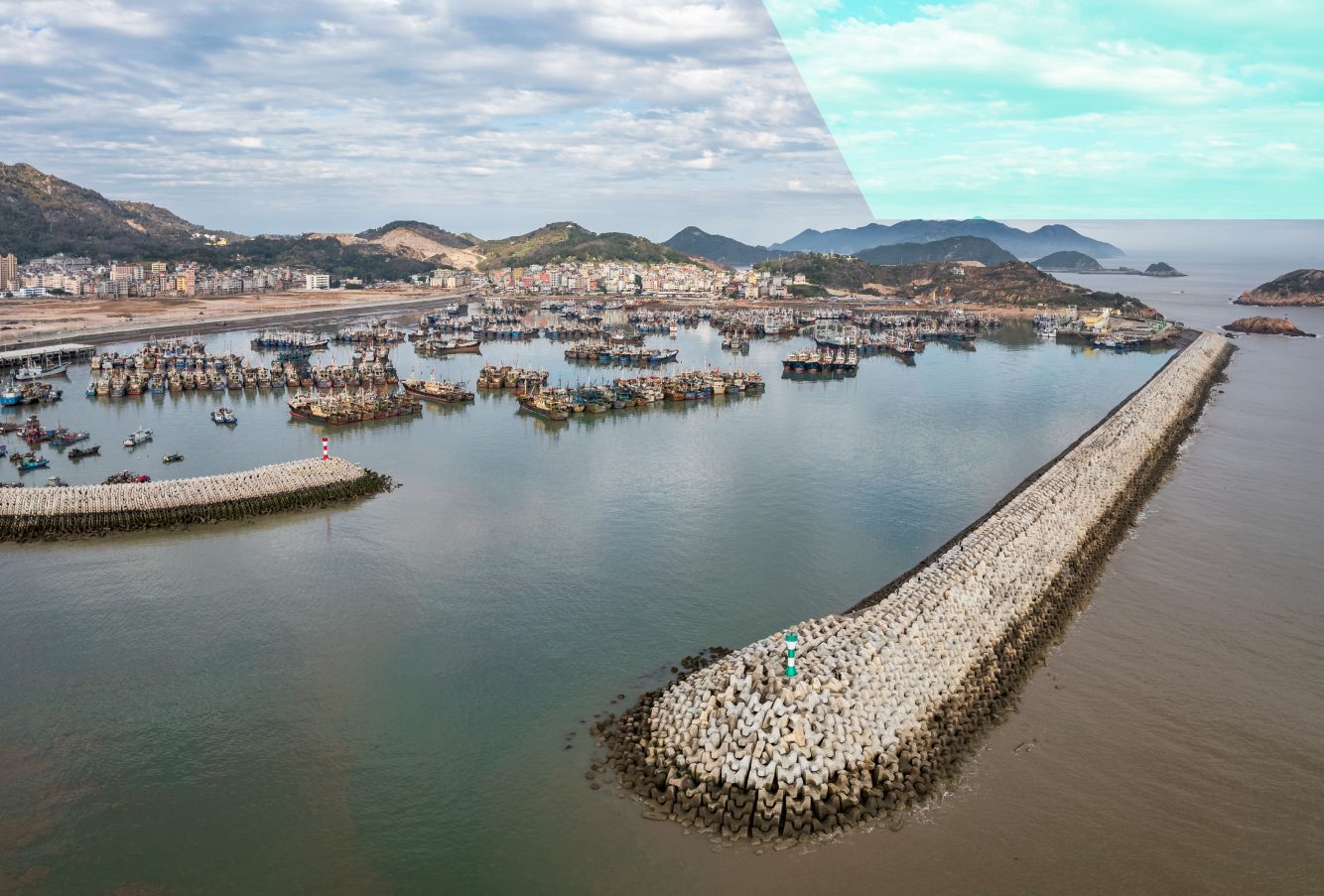Shipping from Hong Kong to Gwangyang Port: What You Need to Know
Latest update on 17 June, 2024 by Caspian Ng– Marketing Analyst at FreightAmigo
In the dynamic world of international trade, shipping from Hong Kong to Gwangyang Port represents a critical link between the bustling markets of China and the burgeoning industries of South Korea. The strategic importance of this route cannot be underestimated, as it not only facilitates the smooth flow of goods across one of the most vibrant trading corridors in Asia but also underscores the interconnected nature of global logistics networks. With both ports acting as pivotal hubs for sea freight, understanding the subtleties of navigating this route, from incoterms to container specifications, is essential for businesses looking to leverage these economic powerhouses to their advantage.
This article dives deep into the critical aspects of shipping between these two significant ports. It starts with an overview of Hong Kong and Gwangyang seaports, touching upon their capacities, facilities, and strategic importance to regional commerce. The discussion then shifts to the trade relations between China and South Korea, providing valuable context for the shipping options available, including container and bulk logistics. Readers will also gain insights into the challenges faced during shipping, such as navigating international shipping regulations and managing the logistical complexities of sea freight, along with practical solutions to these hurdles. Finally, the article offers tips for ensuring a smooth shipping experience, making it an indispensable guide for businesses and logistics professionals navigating this key trade route.
Want To Compare The Best Express, Air Freight, Sea Freight, Rail Freight & Trucking Rates So As To Have Better Control On Cost?
Overview of Hong Kong and Gwangyang Seaports
Key features of Hong Kong seaport
Hong Kong’s Port, located by the South China Sea, is renowned for its deep waters and natural shelter, making it ideal for handling a vast range of vessels. It stands as one of the world’s busiest ports, with a record-setting container throughput of 23.9 million TEUs in 2007. The Kwai Tsing Container Terminals, forming a significant part of the harbor, boast 24 berths extending over approximately 8,500 meters. This facility alone has a capacity to handle over 18 million TEUs annually. Additionally, the unique mid-stream operation allows for at-sea loading and unloading, a distinctive feature that addresses the high handling fees at terminals.
Key features of Gwangyang seaport
Situated in South Jeolla Province, Gwangyang Port is integral to South Korea’s industrial infrastructure, primarily servicing the POSCO Gwangyang steel plant, the world’s largest. In 2015, it managed a substantial 25.5 million tons of coal essential for steel production. The port features specialized terminals like the Yeosu area’s coal ports with capacities ranging from 2.2 to 3.6 million tons annually. The Gwangyang area’s terminals further enhance its capacity, with the CTS terminal handling up to 50.7 million tons of materials annually. Recent expansions in service routes in 2021 underscore its growing importance and connectivity in global shipping networks.
Trade Relations Between China and South Korea
Historical context
Trade relations between China and South Korea have been profoundly shaped by their shared history and strategic considerations. Since normalizing relations in 1992, bilateral trade has surged, growing approximately 20 percent annually. Both nations are members of the World Trade Organization (WTO), which has further accelerated trade growth. The relationship is not just built on economic exchange but also on strategic dynamics, including the need for cooperation on regional security issues such as North Korea.
Impact of Free Trade Agreements
The China-South Korea Free Trade Agreement, signed in 2015, aimed to elevate bilateral trade above $300 billion and enhance both economies’ GDP. This agreement, along with their participation in the Regional Comprehensive Economic Partnership, underscores a deepening economic interdependence. The FTA provides South Korea a strategic edge in penetrating Chinese markets, benefiting from early access compared to Western competitors. Additionally, it offers a framework to protect Korean investments in China, crucial for the over 22,000 Korean companies operating there.
Shipping Options Available
Shipping from Hong Kong to Gwangyang Port offers diverse options tailored to the needs of different shipments, including sea and air freight, each with its unique set of advantages.
Detailed look at sea freight options
Sea freight is the most economical choice for transporting large or heavy items. It offers two main types of load handling: Full Container Load (FCL) and Less than Container Load (LCL). FCL is cost-effective for high-volume shipments as it allows exclusive use of a container, reducing potential damage and improving transit times. Conversely, LCL is suitable for smaller shipments but may incur higher costs per unit and longer transit times due to the consolidation and deconsolidation processes. The major ports such as Gwangyang and Busan enhance the efficiency of sea freight with their advanced facilities and strategic locations.
Detailed look at air freight options
For urgent or high-value shipments, air freight provides a faster alternative, delivering goods within days. It is particularly beneficial for items under 200 kg or less than 2 cubic meters, ensuring minimal handling and rapid transit. Key airports in both China and Korea support robust air freight operations, with numerous airlines offering extensive cargo services. The cost is generally higher than sea freight but justified by the speed and safety it offers, especially for time-sensitive deliveries.
Both shipping methods are integral to maintaining the dynamic trade relationship between Hong Kong and South Korea, facilitated by state-of-the-art logistics infrastructures.
Challenges and Solutions in Shipping
Common issues faced
Port congestion remains a significant challenge in the shipping industry, notably at major ports like Hong Kong and various South Korean ports. This congestion often leads to substantial delays in cargo handling, escalating costs for shipping companies and affecting overall supply chain efficiency. Additionally, the lack of adequate infrastructure and workforce, coupled with bureaucratic inefficiencies, exacerbates the situation, leading to prolonged port delays that disrupt production cycles and complicate shipment planning.
How to overcome these challenges
To mitigate these challenges, businesses are increasingly turning to technology solutions. Advanced booking systems and real-time port congestion tools, such as those provided by GoComet, allow companies to plan effectively and avoid potential delays. These tools offer live updates on port statuses and predictive analytics on delays, enabling better logistics planning. Furthermore, adopting electronic container seals enhances cargo security, providing real-time tracking and monitoring to prevent theft and tampering. Engaging with local customs experts and utilizing green technology also contribute to smoother and more sustainable shipping operations.
Tips for a Smooth Shipping Experience
Best Practices
To ensure a smooth shipping experience from Hong Kong to South Korea, it is crucial to consider the size and weight of the shipment. For small packages, courier services are recommended, while Full Container Load (FCL) is ideal for bulk shipping, offering exclusivity and minimizing potential damage. Conversely, Less than Container Load (LCL) is suitable for smaller shipments but may involve higher costs per unit due to the consolidation process. Additionally, staying informed about the latest regulations by consulting the South Korea Customs website helps prevent delays and ensures compliance, avoiding unforeseen complications or extra charges.
Expert Advice
Engaging with platforms like FreightAmigo simplifies the logistics process by connecting businesses with a network of reliable logistics service providers. This integration streamlines the transportation of goods across borders, making international shipping more manageable. For personalized guidance, consulting with experts can demystify the complexities of customs clearance and ensure adherence to all applicable laws, significantly enhancing the shipping experience. Leveraging expert advice is particularly beneficial in navigating the intricacies of shipping to locations like Amazon FBA in Mainland South Korea, where specific requirements and timing are critical.
Conclusion
Throughout this article, we explored the complexity and significance of shipping from Hong Kong to Gwangyang Port, underscoring the pivotal role that strategic planning, understanding of transport options, and overcoming logistical challenges play in enhancing international trade between China and South Korea. By delving into the intricacies of sea and air freight, we provided a comprehensive overview that highlights how businesses can navigate the waters of cross-border shipping efficiently. The insights into overcoming port congestion and leveraging technology for more sustainable operations are crucial for companies aiming to streamline their logistics processes and capitalize on the dynamic trade relations between these two powerhouse economies.
As the global trade landscape continues to evolve, the importance of selecting the right logistics partners and employing best practices has never been more critical. Engaging with resources and platforms that offer expert guidance and easy access to shipping inquiries can markedly simplify the shipping experience. For those looking to embark on shipping from Hong Hong Port to Gwangyang, FreightAmigo stands as a valuable portal for all your logistics needs, encapsulating the essence of efficient and effective shipping strategies. By harnessing the insights and advice shared in this guide, businesses and logistics professionals are well-equipped to navigate the complexities of international shipping, ensuring smooth, timely, and cost-effective delivery of goods across one of Asia’s most vibrant trade routes.
If You Wish To Ship From Hong Kong to Gwangyang Port, Please Go To The FreightAmigo Page For Inquiries
Read more:
Ship from Hai Phong Port to US
【Shipping to South Korea】 A Comprehensive Guide for Ecommerce Businesses
Ship From Korea To Hong Kong – Book Courier Service In 1 Min
If you have any inquiries on logistics / supply chain, feel free to contact FreightAmigo now:
Chat with us online | Hotline: +852 28121686 | WhatsApp: +852 27467829









































